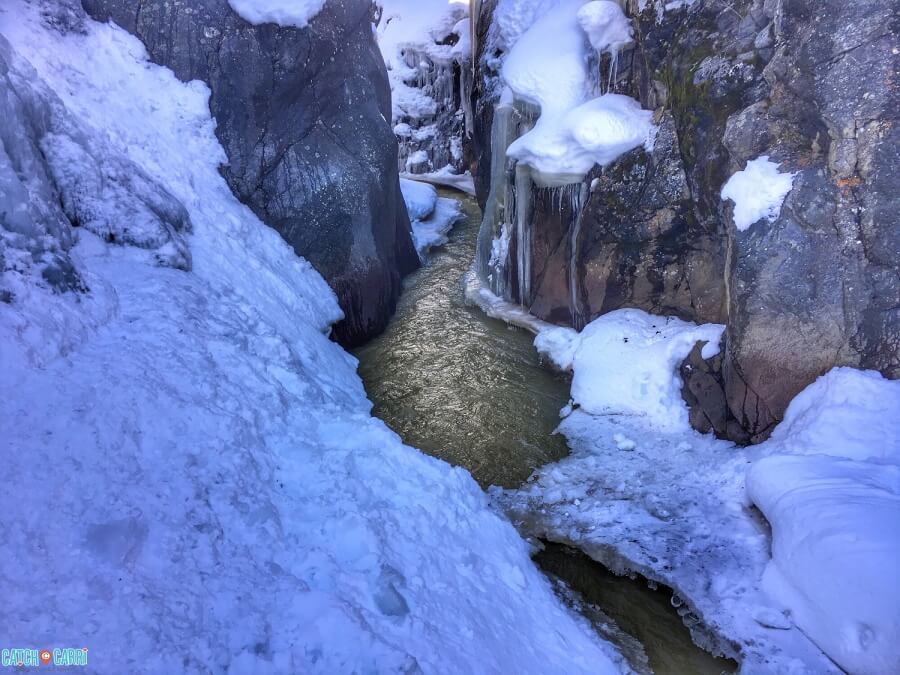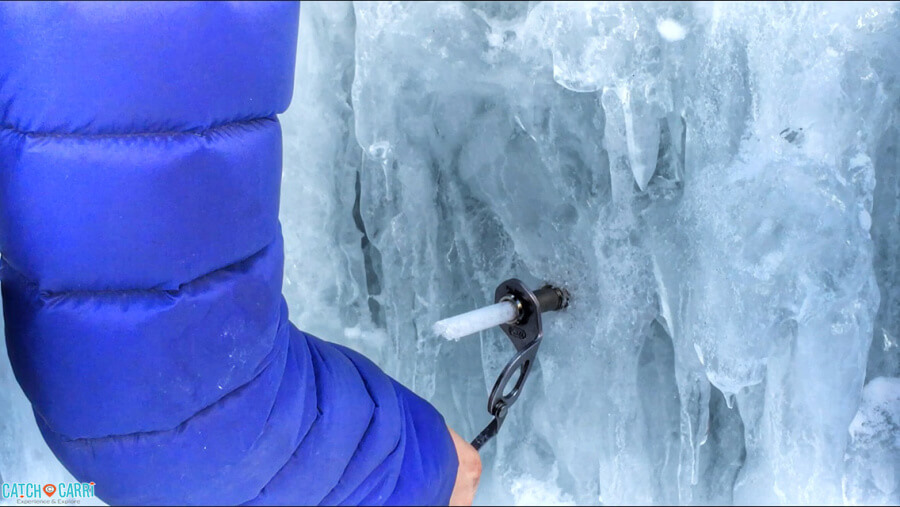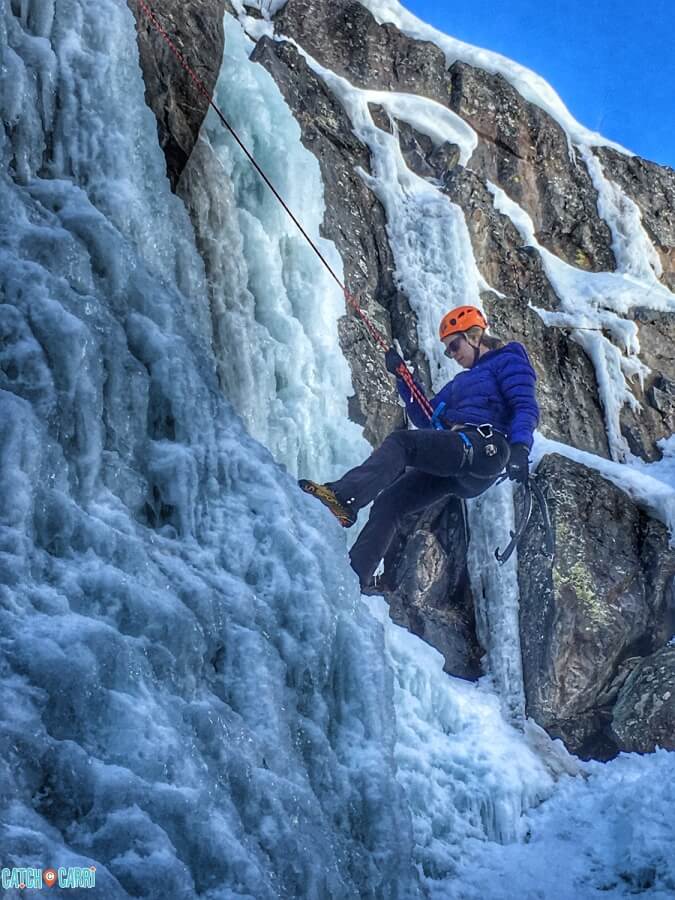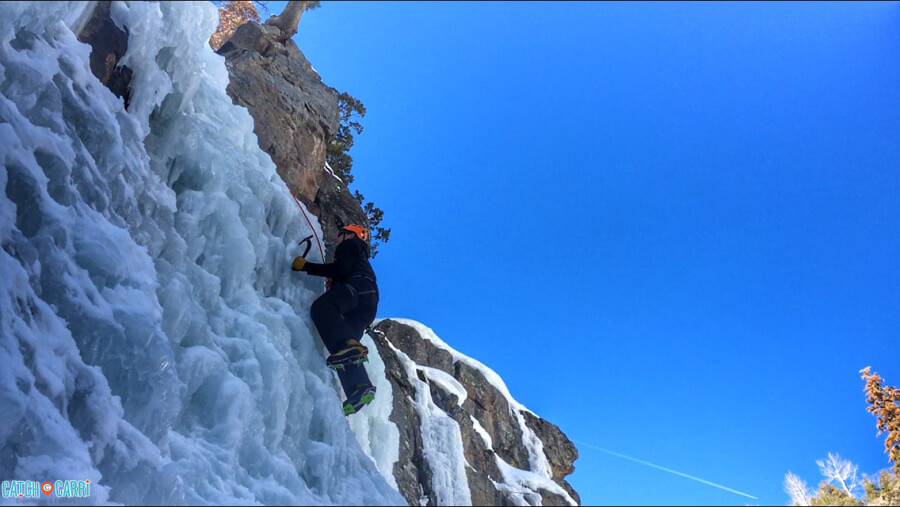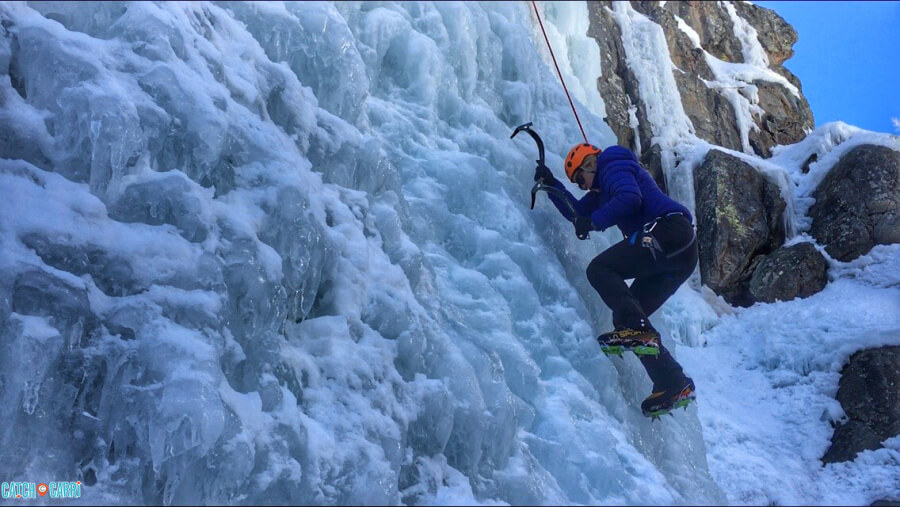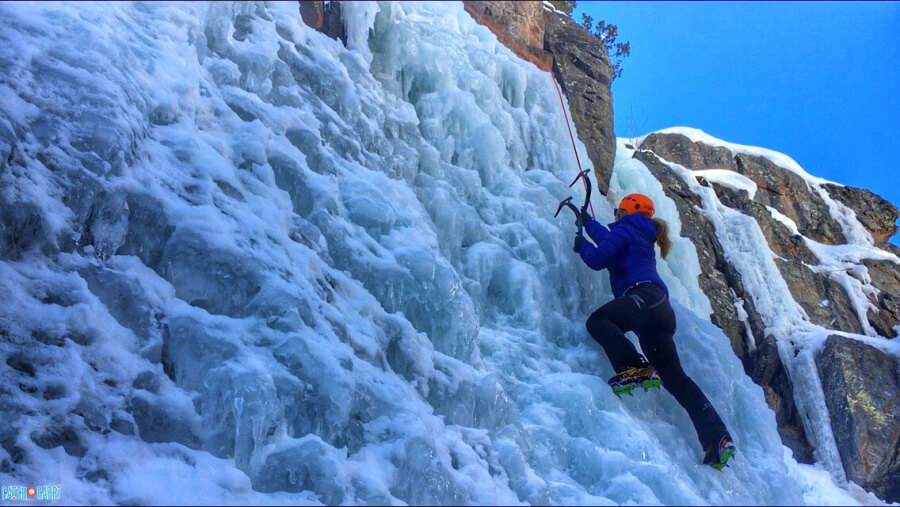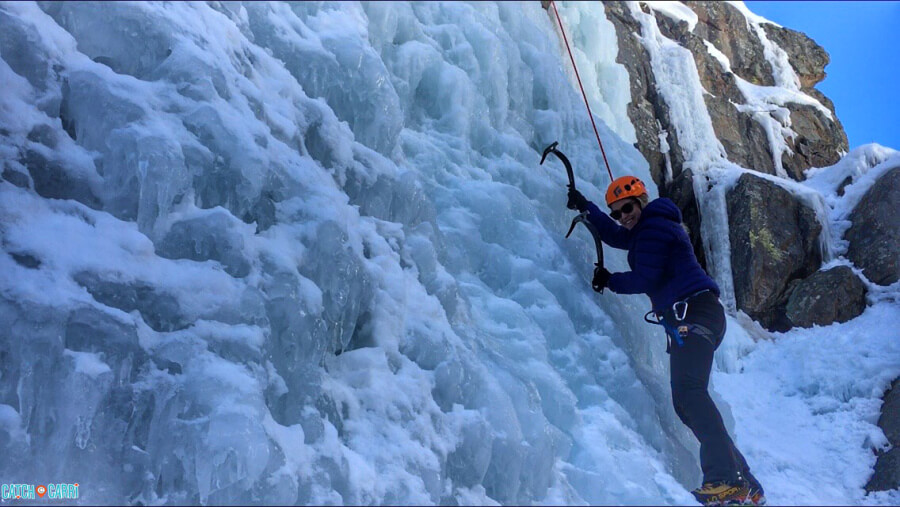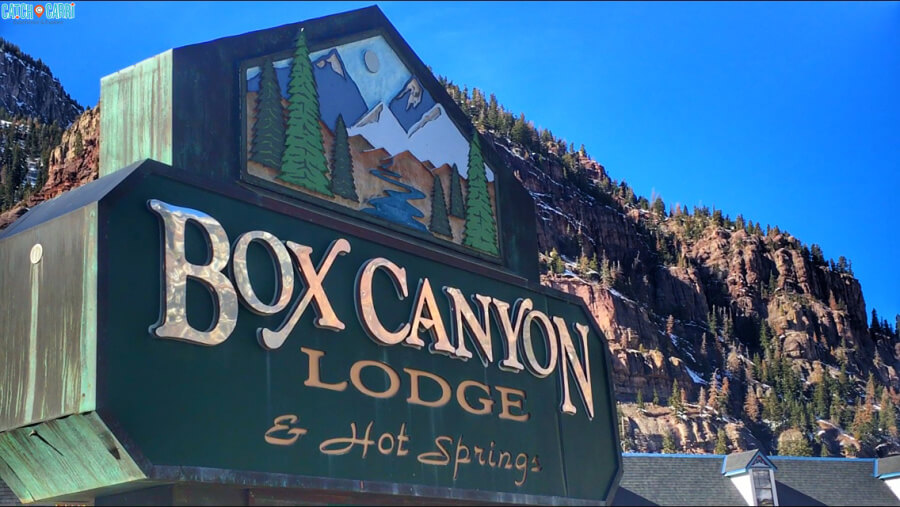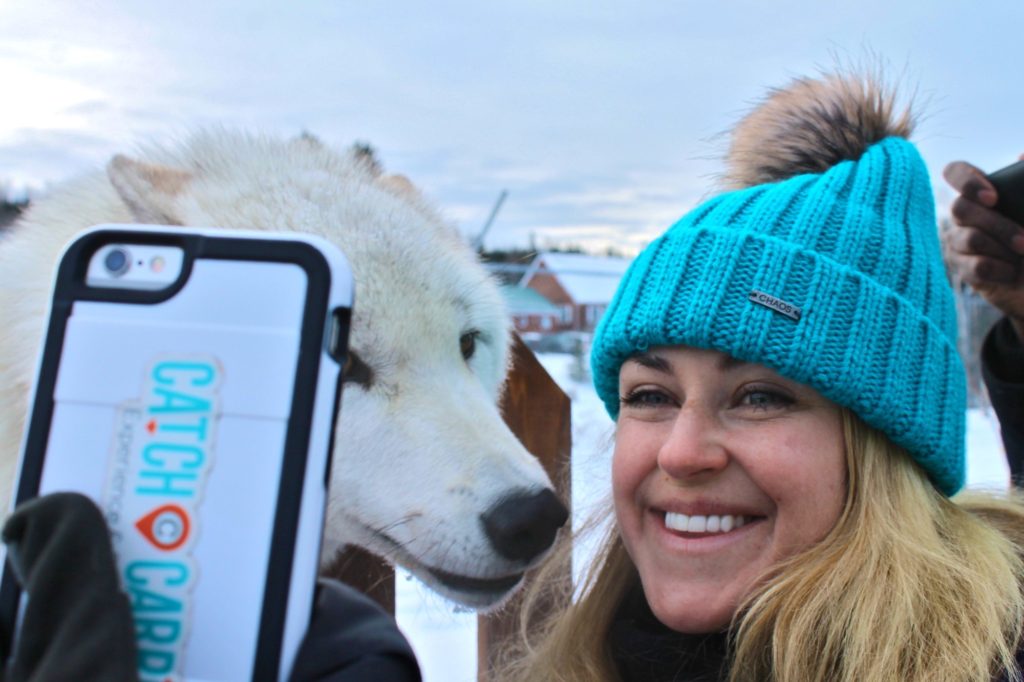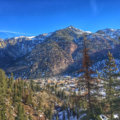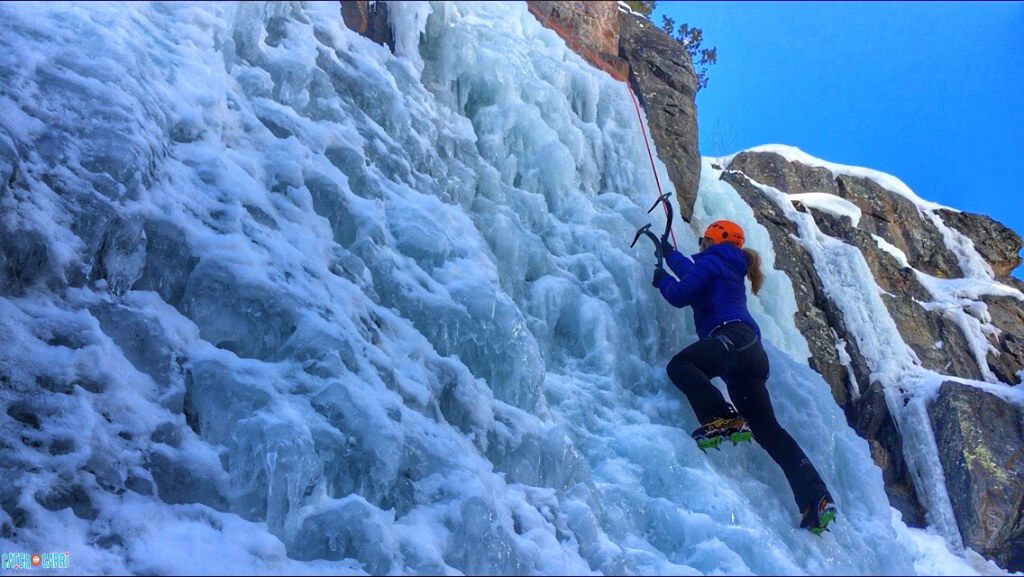
Ice Climbing in Ouray, Colorado
When most people come to Colorado for a winter vacation it’s all about the skiing but Ouray offers an activity much different than turning down fresh powder. In this southwestern town, which was put on the map in the 1800’s for gold and silver mining, people visit from all over the world to ice climb a canyon surrounded by the jutting 13,000 foot peaks of the San Juan Mountains. And it’s this sport that keeps the town alive in winter.
It takes less than five minutes to drive from Main Street Ouray to the world’s largest manmade Ice Park. And while it’s free to use, if you’re knew to the sport, like I was, it’s best to hire a guide. I went with San Juan Mountain Guides in downtown Ouray, which is where the morning started. After meeting our guide Chad, who has 20+ years experience, we were outfitted with ice-climbing boots, sturdy crampons, and a harness. Then it was time to head to the park. And lucky for us, it’s beautiful day with no wind, sunny and blue skies and temperatures warm enough that it’s hard to believe it’s winter.
Even on a weekday at 8:30 a.m. the park is full of novice’s like myself as well as apt climbers who either climb with a partner or self-belay. The park is man made and stays in check all winter through the work of ice farmers. Shower heads attached to PVC pipeline trickle recycled water off steep cliffs that eventually freeze into climbable routes. Some are harder than others in designated climbing zones like the Upper Alcove. Here, not only is the ice some of the steepest and tallest in the park, it also doesn’t have many open pockets for footholds and handholds.
After watching climbers’ work their way up intimidating 110-foot sheer steep ice walls at the parks entrance, we make our way to a beginner area called South Park. To get to the bottom of the canyon, we walk along a windy snow covered path that is so steep we rely on a rope system put in by the park to help us stay upright on the way down. At the base, Chad walks us through the basics of how to use our crampons before we climb up an angled snowfield to get used to our new pointy kicks.
“Kick the mono point directly into the snow,” Chad tells us. “Lead with one foot and match with the other. It’s not about big steps but creating a base.”
After slowly making my way to the top, Chad tells me to stop making multiple taps into the snow and instead focus on one precise kick to secure the crampon. Even with a background in rock climbing I feel completely out of my element. I am glad we start on a steep snowfield instead of a vertical wall to get used to the equipment and focus on our form.
On the next lap, Chad introduces one ice axe, and then the second one for the third lap. By now, we are able to climb to the top of the waterfall by driving the ice ax directly above our heads with a nearly full extension of our arms. By instinct, I want to place the ice axe directly above my shoulder at a 90-degree angle but Chad is quick to teach our group the right form.
“Think of making a pyramid with your body. If you keep your hands above your head, you will maintain your center of balance, save energy and climbing more efficiently.”
After four laps, Chad breaks down the route and sets up a more challenging one next to us. Here, we start on a sheer wall instead of a snowfield, and climb 60 feet to top the route. Overall, it’s easier than I thought to drive our crampons and ice axes into the snow but also know that with a more advanced route, it would be much more challenging and intimidating. In this beginner area, there are also lots of pockets perfect for hand and foot holds. But on some of the tougher routes climbers must be much more skilled to work themselves up nearly solid slabs of ice.
In between laps, we rest (which is welcome becomes my arms are starting to fatigue) as Chad teaches us about the tools used to lead climb on ice. We take turns installing ice screws into a sold sheet of ice that are used as anchor points to clip the rope into while ascending a route.
Afterwards, we have enough time for one more lap. It’s time to put all the tips into play and climb with better technique. At the top, I take a big breath and enjoy the surrounding views of the steep canyon walls filled with ice climbers determined to conquer a sport that grows in popularity each year. It’s especially fun knowing that it’s a sport where even someone with no experience can make it to the top of a route. It may take conquering some fear and time to gain confidence but with the right instructor you will be rappelling down before you know it.








